Exhibitions
Bustle, Chat and Frolics: Scenes of Gatherings from Umimori’s Collection

Our lives changed dramatically when COVID-19 swept the globe in 2020. Various measures were enacted to tackle this invisible enemy. Sadly, the most effective of these was to “avoid meeting other people.” Over the following two years or so, people were forced to endure varying degrees of loneliness and isolation. We have grown accustomed to life without end-of-year family gatherings, dinners with friends, frolics with schoolmates, events at large venues, or festivals packed with sightseers, for example. This experience has given us a renewed sense of just how precious and joyful these shared moments are.
Paintings also reveal how people have enjoyed each other’s company down the ages, whether by holding lively banquets with friends, parading at festivals, or taking part in seasonal events, for instance. This exhibition uses works from Umi-Mori Art Museum’s Japanese art collection to show scenes of people gathering and having fun together, be it in bustling crowds at special occasions or in the small interchanges that color our daily lives.
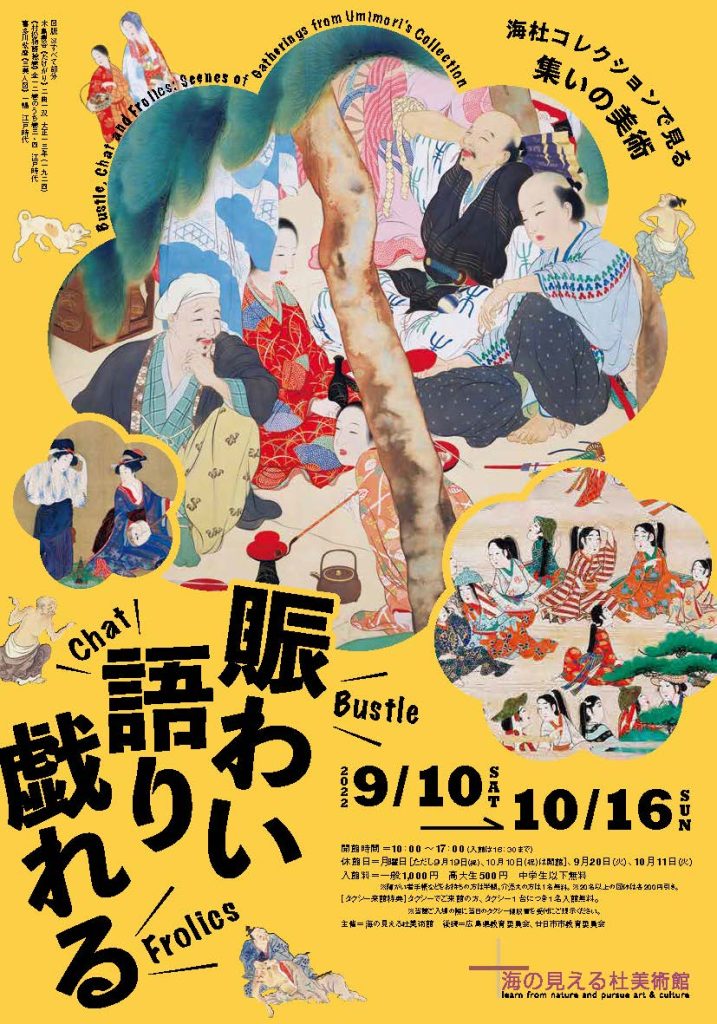
General Information
Hours: 10:00-17:00 (Last entry: 16:30)
Closed: Monday (except September 19th and October 10th), and September 20th, October 11th
Admission: General admission: 1,000 yen, High school/university students: 500 yen, Junior high school students and younger: Free
*Admission is half price for people with disability certificates, etc. One accompany person is admitted free of charge.
*Groups of 20 or over will receive a discount of 200 yen per person.
Venue: Umi-Mori Art Museum (10701 Kamegaoka, Ohno, Hatsukaichi, Hiroshima)
With the support of: Hiroshima Board of Education and Hatsukaichi City Board of Education
Chapter 1. Festive Occasions: Pilgrimages, Processions and Festivalseneral
Since ancient times, people have let off steam at special occasions like bustling festivals or pilgrimages to famous temples and shrines. The public has also enjoyed watching the ostentatious processions of visiting nobles. This chapter shows urban and rural folk letting their hair down as festive events. Three paintings show pilgrims visiting the scenic holy sites of Nachi, Itsukushima or Sumiyoshi, while Imperial Visit to Nijo Castle depicts Emperor Go-Mizunoo’s procession to Nijo Castle and Scenes In and Around Kyoto portrays people bustling around famous places in Kyoto and its environs.
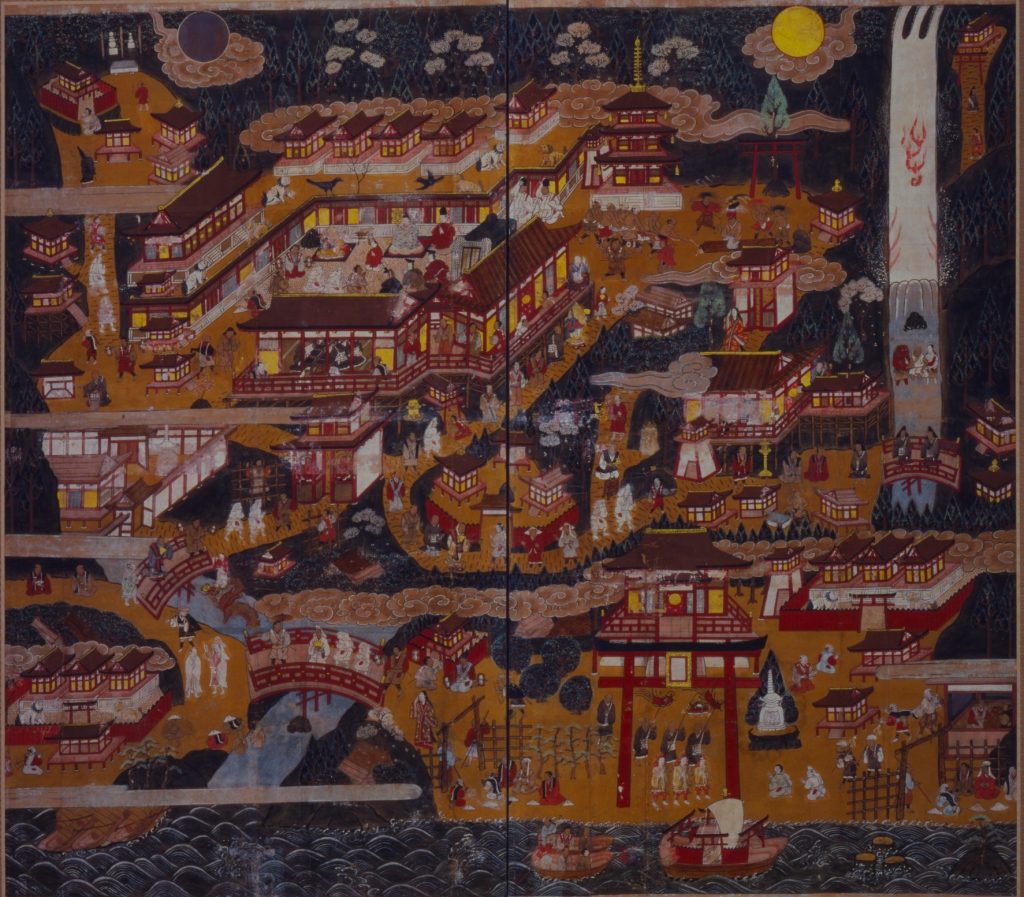
Nachi Pilgrimage Mandala, Edo period, Private collection


Imperial Visit to Nijo Castle, Edo period, Private collection
Chapter 2. Everyday Scenes: Friends, Conversations and Study
COVID-19 prevented us from dining and drinking together or gathering at large events. The pandemic also impacted more intimate settings, such as classroom discussions or friendly conversations between friends and family. If these did take place, they did so through masks or with social distancing in place. This chapter focuses on everyday exchanges, from cozy, intimate chats to scenes of teachers instructing their pupils.
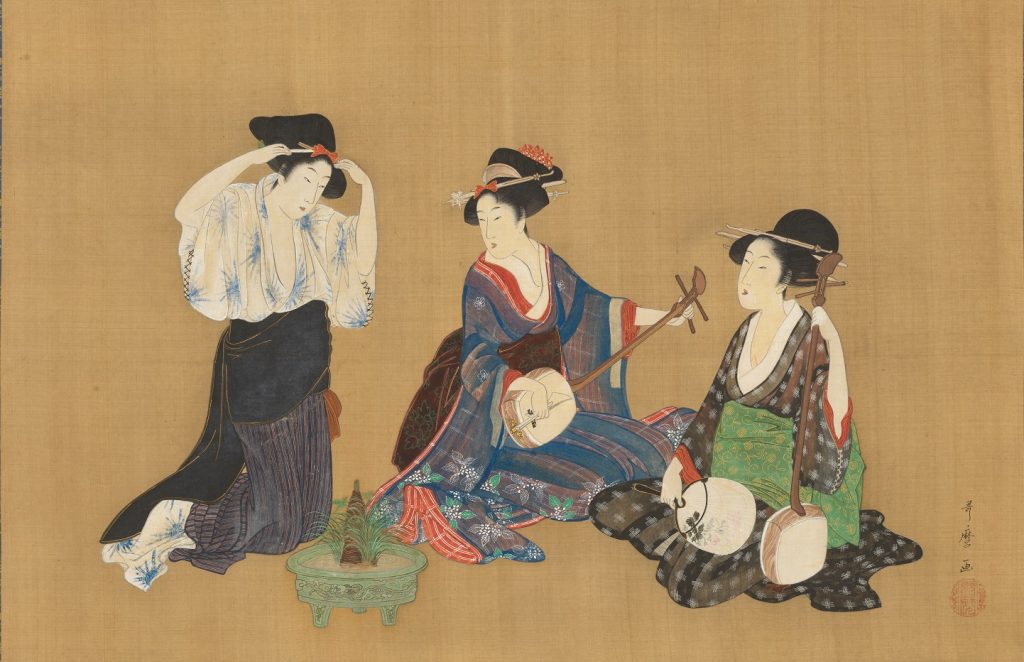
Hiroshige Utagawa: Famous Places of the Eastern Capital: The Flourishing Theater Districr, Edo period, Tenpo 10-13 (1839-1842), Private collection
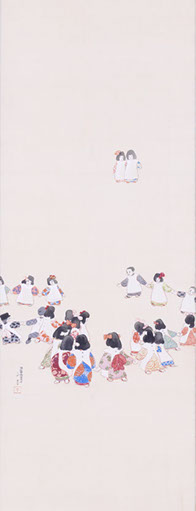
Teruo Hata: Play, 1912(Meiji 45), Private collection
Chapter 3. Everyday Scenes: Friends, Conversations and Study
We often enjoy an event more with trusted friends or amongst a crowd, as revealed by the scenes of people watching a performance in Illustrated Tale of Muramatsu (No. 20) or enjoying the seasons in Mushroom Hunting (No. 26). Since ancient times, people have also built stronger bonds by ‘breaking bread’ together. This chapter explores the reasons we gather to eat, drink and enjoy each other’s company, whether for ceremonial occasions, seasonal events or for a quick drink after work.

Illustrated Tale of Muramatsu, Edo period, Private collection
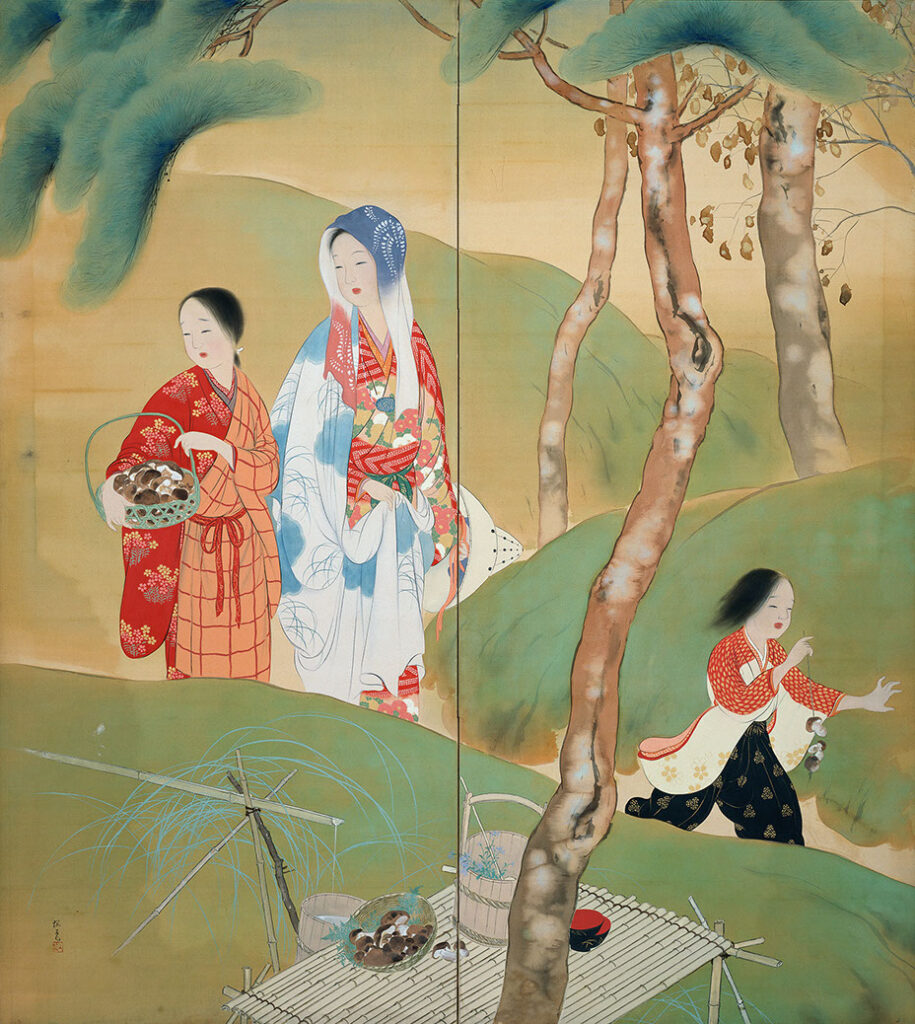
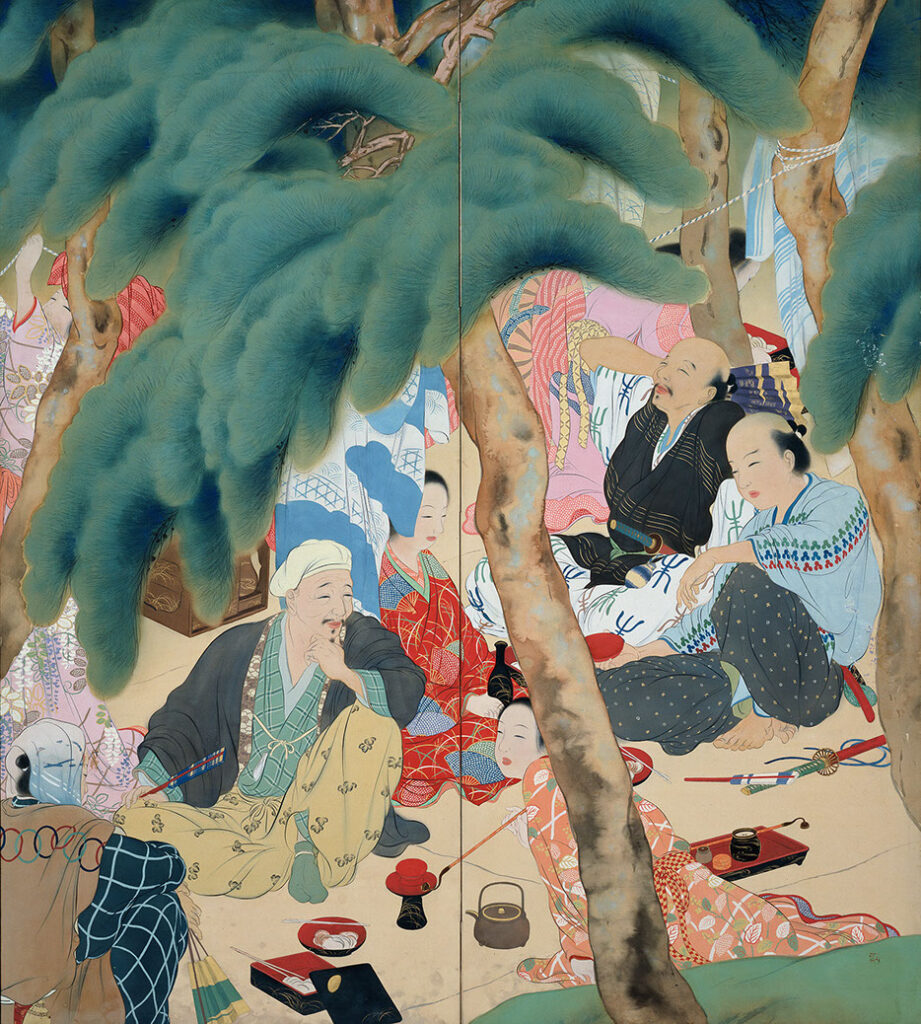
Okoku Konoshima: Mushroom Gathering, 1924(Taisho 13), Private collection
Epilogue. The Afterglow of Gatherings
All enjoyable gatherings eventually come to an end. However, paintings can remind us of the joyous time we spent together. This is especially true of ‘kisho,’ (‘collections of words and drawings’), which feature calligraphy and paintings by multiple artists on one canvas. This chapter features works born of artistic gatherings or exchanges. These include Cat and Ladle (No. 28), a collaboration painted by two Edo-period masters, perhaps during a private drinking party, and Insects, a collection of insect-themed paintings by Takeuchi Seiho and other artists active in Meiji-era Kyoto. The exhibition concludes with Green Tea Catalogue (No. 34) and Green Tea Ceremony Record (No. 35), two accounts of the tea ceremony. These works exude a strange stillness with their arrangements of tea utensils and absence of participants. Perhaps they intend to convey the afterglow of a tea ceremony.
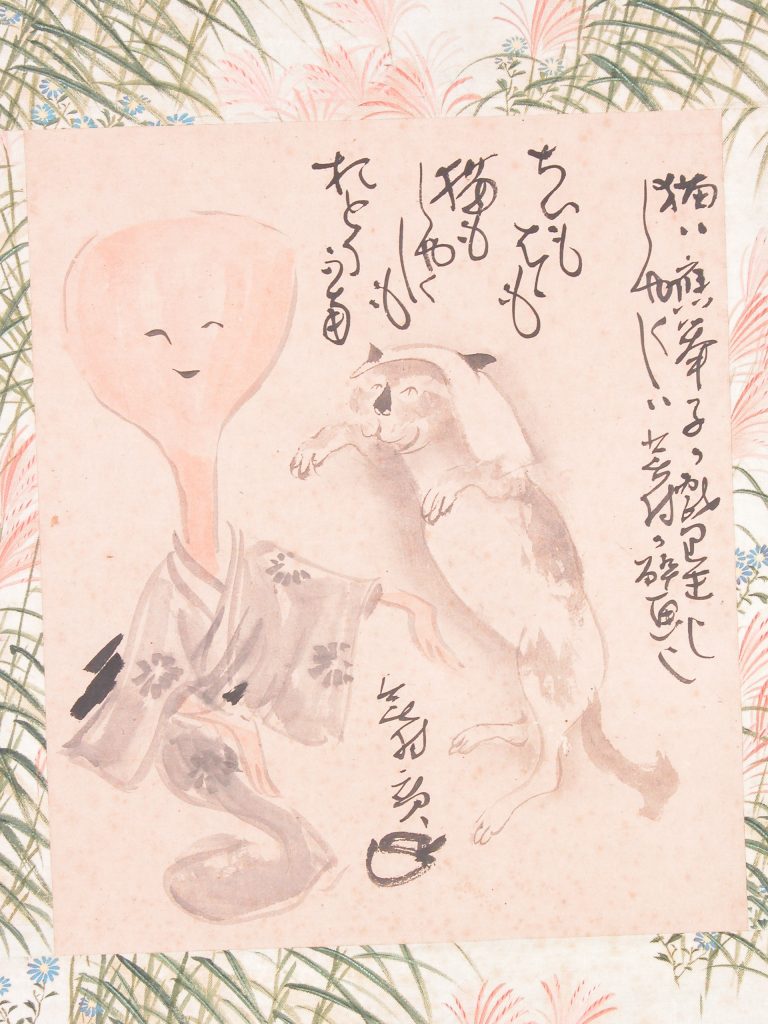
Okyo Maruyama and Buson Yosa: Cat and Ladle, Edo period, Private collection
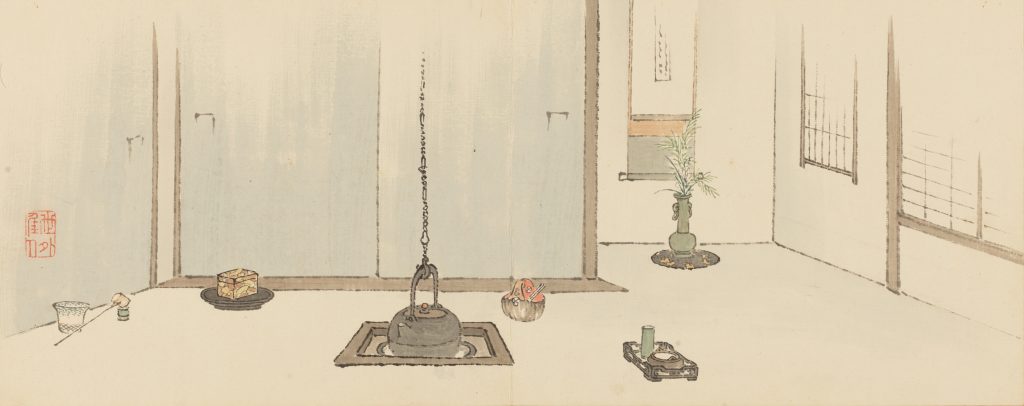
Bairei Kono: Green Tea Ceremony Record, 1876(Meiji 9), Private collection


